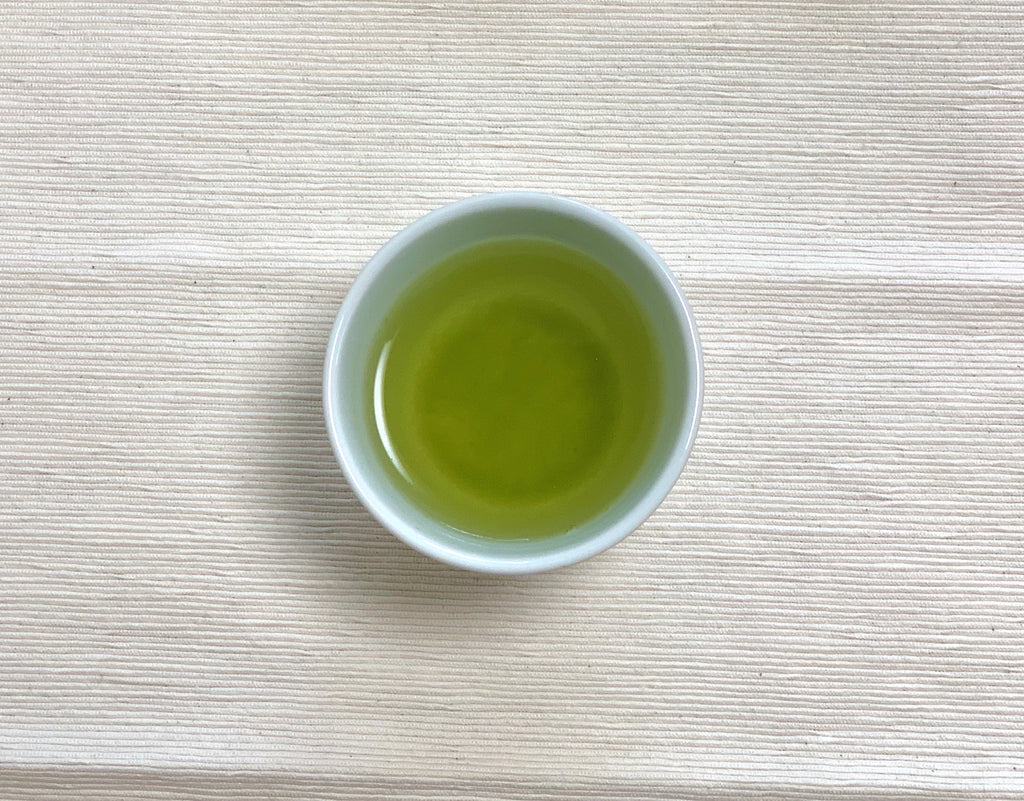Sencha can be classified into fukamuchi (deep-steamed) sencha and asamushi (lightly-steamed) sencha according to the steaming method. Originally, lightly steamed sencha was the mainstream, but recently, fukamushi, deeply steamed sencha has also increased.
Fukamushi sencha is deep steamed green tea. It is steamed for a shorter period of time than asamushi (lightly steemed) sencha. Usually they are steamed for 60 seconds, while asamushi sencha takes around 30 seconds for steaming. Whether or not it can depends on things like where it was cultivated and the elevation of the land. A popular area for the production of fukamushi sencha is Kakegawa and Makinohara region in Shizuoka prefecture, and many places in Kagoshima prefecture.
You may be wondering what difference deep steaming the tea leaves makes. The answer is that deep steaming makes an extreme difference in the taste of the green tea. After deep steaming, the tea leaves are less astringent and have more depth and sweetness. Since the steaming process is longer, the tea leaves become softer which means the tips often break when they are rolled. When it is prepared, it also has a deeper color, with some small bits in the bottom of the teapot.
The way fukamushi sencha appears may be a disadvantage, as people may think that the tea is of lesser quality (which it is not). However, because of the small bits in the bottom of the teapot, fukamushi sencha actually has rich health benefits. When you drink the small bits in the bottom, you are actually getting more of the nutrients found in the tea leaves. If you want to brew your own fukamushi sencha, it is advised to use a Japanese teapot, as the filters on other teapots may clog with the particles from the fukamushi sencha.
Fukamushi sencha became popular in more recent years, even though originally it was made long ago. In the 1970s in Makinohara in Shizuoka prefecture, the land has some flat areas. In these areas, the tea leaves get more sunshine than normal, which leads them to be thicker, bigger, and a little more bitter than normal sencha leaves. Farmers in the flat areas discovered that steaming the leaves for a longer time took away the bitterness. They started marketing this kind of fukamushi sencha in Japan, and it became popular. If you prefer a sweeter taste to your green tea (but not too sweet) and would also like to enjoy some extra health benefits, fukamushi sencha may be right for you!

